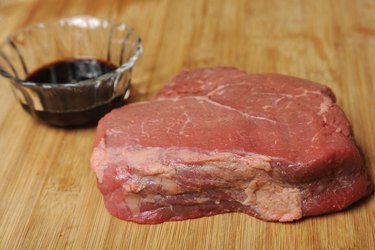
Soy sauce is loaded with naturally occurring glutamates, the organic flavor compounds that convey savoriness or "umami," and varying degrees of salt, making soy sauce a potent base for a marinade.
Get Your Feet Wet
Video of the Day
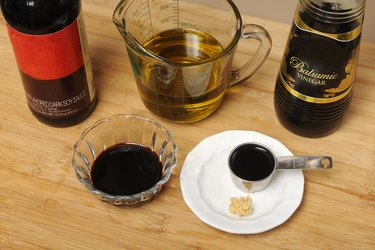
If you've never used soy sauce as a marinade outside of Asian food, this basic recipe makes a useful template for experimentation.
Video of the Day
● 1 cup olive oil or vegetable oil ● 2 tbsp. balsamic vinegar ● 1/4 cup soy sauce ● 2 tbsp. sugar or other sweetener (optional) ● 1 clove of garlic, crushed or minced
Step One
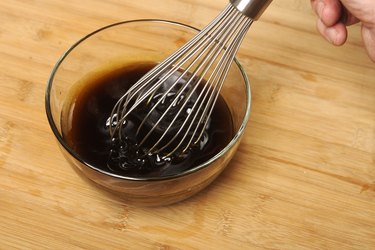
Whisk ingredients in a non-reactive glass or stainless-steel bowl, until well mixed.
Step Two
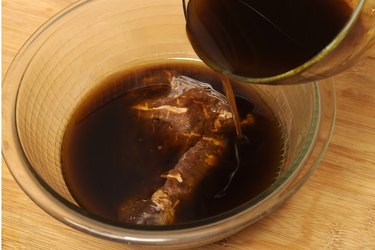
Put the steak in a non-reactive bowl or heavy zipper-seal bags and pour the marinade over the steak, covering it. If you use a bowl, cover it with plastic wrap to keep out any stray odors from your fridge.
Step Three
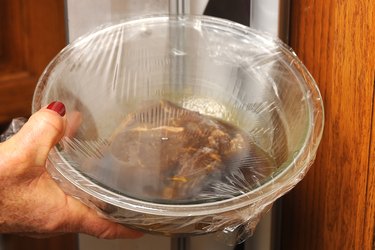
Allow the steak to marinate under refrigeration for at least 30 minutes or up to a day, which provides more time for the flavors to meld and deepen.
Make it Yours
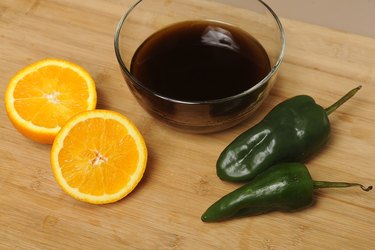
This basic recipe can – and should - be adapted to suit your personal preference and the meal you're planning. Add in chili peppers for heat, or use citrus instead of vinegar. The tart fruit and hot chilies complement each other beautifully, while the savory flavor of the soy sauce prevents them from making a jarring contrast with the beef.
Add Sweeteners
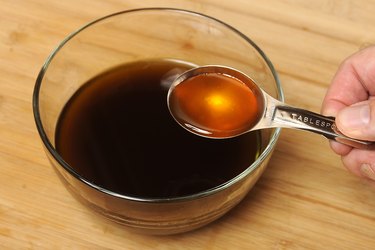
A small quantity of brown sugar or other sweetener lends additional complexity, bringing out the innate sweetness of the beef and moderating the other flavors. Changing your sweetener -- try an artisanal honey, or palm sugar, as alternatives -- changes the steak's final flavor.
Updated Classics

If you ordinarily bathe your steaks in a Western-style marinade based on wine, vinegar or Worcestershire sauce, you won't need to change it much to take advantage of soy's umami-building prowess. Just adding a tablespoon or two for every cup of marinade will enhance the beefiness of your steak, without noticeably altering its overall flavor profile. If your marinade consists primarily of Worcestershire -- no slouch itself in the umami department -- adding a splash of soy sauce will smooth and broaden its flavor, moderating the Worcestershire's sharp edges.
Not All Created Equal
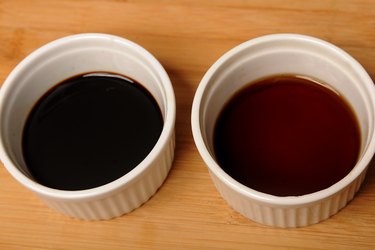
Soy sauce comes in a bewildering number of varieties, so deciding which one to use can be a bit challenging. As a rule, Japanese brands tend to be lighter in color and flavor than the more robust Chinese styles. Both work well in steak marinades, though you'll need to use less of a Chinese-style sauce.
Mushroom Soy
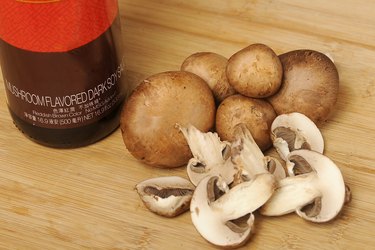
Mushroom soy -- combining both of those steak-friendly flavors -- is a Chinese variation that's especially worth trying. Most brands of soy sauce are produced industrially, but if you haunt your local Asian grocer you might find a few old-school artisanal brews, which have unusually complex and subtle flavors.